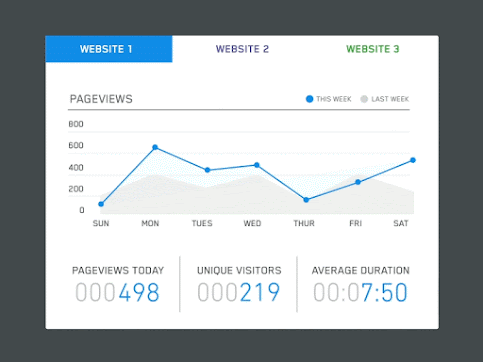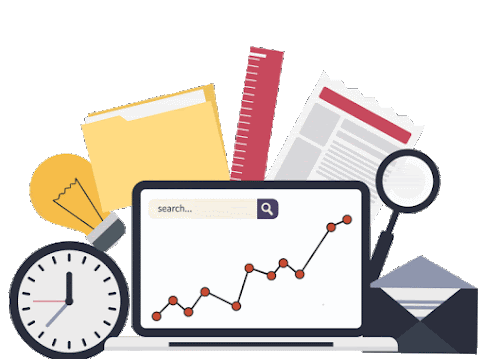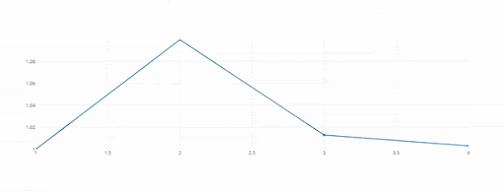the future of dashboards is dashboardless
Earlier this year I wrote a long read about where I feel data visualisation is in 2021. In this post, I mention two things that I want to dive into more…
- Are dashboards outdated because of inherent designer bias, the critical thinking skills of the consumer & dashboard half life?
- Is the next wave in our field not data literacy, but instead Just in Time insights & educating the asking of better questions?
A dashboard, as defined by Stephen Few, is a visual display of the most important information needed to achieve one or more objectives; consolidated and arranged on a single screen so the information can be monitored at a glance.
In the world where Stephen Few’s approach to data visualisation is king, the objectives are clear, screen sizes are homogenous & every data consumer has the same level of tacit understanding of the underlying data. Peace in our time.
Unfortunately, the student economist in me is compelled to remind you that we live in a second best world.
In the world where Stephen Few’s approach to data visualisation is king, the objectives are clear, screen sizes are homogenous & every data consumer has the same level of tacit understanding of the underlying data. Peace in our time.
Unfortunately, the student economist in me is compelled to remind you that we live in a second best world.
- Objectives in real life are often wibbly-wobbly
- Screen sizes & resolutions vary a lot
- People (largely) only care about the data that relates to their job
Economics is sometimes defined as a study of choice under scarcity… and dashboards nudge you to form thoughts & ideas based on scarce information.
Analysts are actually data curators.
Before we hurtle headfirst into why dashboardless is the future, let us take a step back into why dashboards & indeed, analysts exist in the first place.
The role of an analyst is to be the filter & translator of curated data. For the last 15–20 years, with data becoming the new soil/oil/sun – people are now up to their eyeballs in data. In fact, I’d even go as far to say some folks are actively attempting to have less contact with data.
Suddenly, data is easy to dismiss – after all, data is often presented with an agenda.
So here comes the hero, the analyst, to filter, direct, and translate your data into actionable insight.
The role of an analyst is to be the filter & translator of curated data. For the last 15–20 years, with data becoming the new soil/oil/sun – people are now up to their eyeballs in data. In fact, I’d even go as far to say some folks are actively attempting to have less contact with data.
Suddenly, data is easy to dismiss – after all, data is often presented with an agenda.
So here comes the hero, the analyst, to filter, direct, and translate your data into actionable insight.
Iterative business intelligence & input from subject matter experts means a tool is built to service the needs of the folks who inputted. The curated data-driven dashboard has helped create a tool to reduce time to insight by extracting the signal from the noise.
This process is simultaneously better than what came before, but absolutely not perfect. The assumptions & biases poured into this tool is driven by questions asked by others. Design thinking exercises & project scoping meetings could help diversify the question set – but the choices are on the dashboard designers & key decision makers.
The problem with dashboards is they’re built with boundaries in mind.
This process is simultaneously better than what came before, but absolutely not perfect. The assumptions & biases poured into this tool is driven by questions asked by others. Design thinking exercises & project scoping meetings could help diversify the question set – but the choices are on the dashboard designers & key decision makers.
The problem with dashboards is they’re built with boundaries in mind.
My responses are limited; you must ask the right questions.
At the other end of this particular thought noodle is the polar opposite solution to a dashboard – a search bar. Dashboards are so constraining? Fine. Let them ask anything, and the computer can build it.
This also comes with its own set of problems. Whilst innovations like AI Assistants & GPT-3 are helping move this needle, a search bar to data assumes the user knows questions they can ask. If the first two questions don’t give the response they want, they won’t bother a third time.
This also comes with its own set of problems. Whilst innovations like AI Assistants & GPT-3 are helping move this needle, a search bar to data assumes the user knows questions they can ask. If the first two questions don’t give the response they want, they won’t bother a third time.
A dashboard can allow this exploration, but the constraint is either data or preset boundaries. The flow is iterative, but there are walls.
A search bar allows for boundaries, but the constraint is the lack of breadcrumbs to help explain the journey. The flow is limitless, but it’s easy to get lost among the trees.
The crux of this problem lies in the dearth of critical thought in the world. How can we begin applying ointment to the deep data literacy wound, when it’s infected with a missing critical thinking skill?
A search bar allows for boundaries, but the constraint is the lack of breadcrumbs to help explain the journey. The flow is limitless, but it’s easy to get lost among the trees.
The crux of this problem lies in the dearth of critical thought in the world. How can we begin applying ointment to the deep data literacy wound, when it’s infected with a missing critical thinking skill?
It starts with Flow
The step to tackling both these challenges, in my opinion, lies in Flow. The process that any human takes to identifying a thing they want to know about, the steps taken to answer it & then the thoughts that follow – that’s an individual flow.
Often, both for work & for pleasure, I find myself with questions of my data. Being familiar with the data & adept with the tools, I’m able to explore, build & answer my question. That visualisation isn’t converted into a dashboard – the view is either discarded or (less often) added to my ‘scratch’ folder.
I have the tools, skills & tacit data knowledge to do this on the fly – but what about the average end user? This person’s objective is simply to answer their question, then move onto their next task. And so begins their hunt for the right data, the right slice & the right solution
I have the tools, skills & tacit data knowledge to do this on the fly – but what about the average end user? This person’s objective is simply to answer their question, then move onto their next task. And so begins their hunt for the right data, the right slice & the right solution
The future of dashboards is dashboardless :
What if the humble dashboard was a springboard, not a vehicle? Where a thought for an end user starts with a dashboard, but can be taken anywhere – without having to index every dashboard or tool that exists in their artillery?
When I speak of Just in Time analytics, this is what I mean – imagine being able to pivot from a thought into another, and being educated within the flow. Nudges to remind you where you are & where you’ve been – allowing for reflection & the creation of a user led narrative.
When I speak of Just in Time analytics, this is what I mean – imagine being able to pivot from a thought into another, and being educated within the flow. Nudges to remind you where you are & where you’ve been – allowing for reflection & the creation of a user led narrative.
Wouldn’t that have been a poetic ending to the blog? That said, let’s end this blog with more tangibles — with some thoughts on how you can move the needle today
- Half Life: Consider your newly published dashboard like driving a car off the lot. It drops in value immediately & is already outdated. Revisit, revise & reiterate, so it can be both relevant & have longevity.
- Half Life: Consider your newly published dashboard like driving a car off the lot. It drops in value immediately & is already outdated. Revisit, revise & reiterate, so it can be both relevant & have longevity.
- Consider flow: for all parties. What is the creative flow? What is the question / critical thought flow? What is the end user flow? Listen, understand & reimagine — then share the learnings to reinforce within yourself & others.
What are your thoughts on this topic? Could the future of dashboarding be dashboardless? And where do you see the middle ground?
Read More :: Why You Should Stop Using Loops?
Read More :: Fun facts about programming – Enjoy Programing
Tags
dashboard admin
dashboard design
dashboard for excel
dashboard live
dashboard meaning
flowchart of dashboard
The Future of Dashboards is Dashboardless




